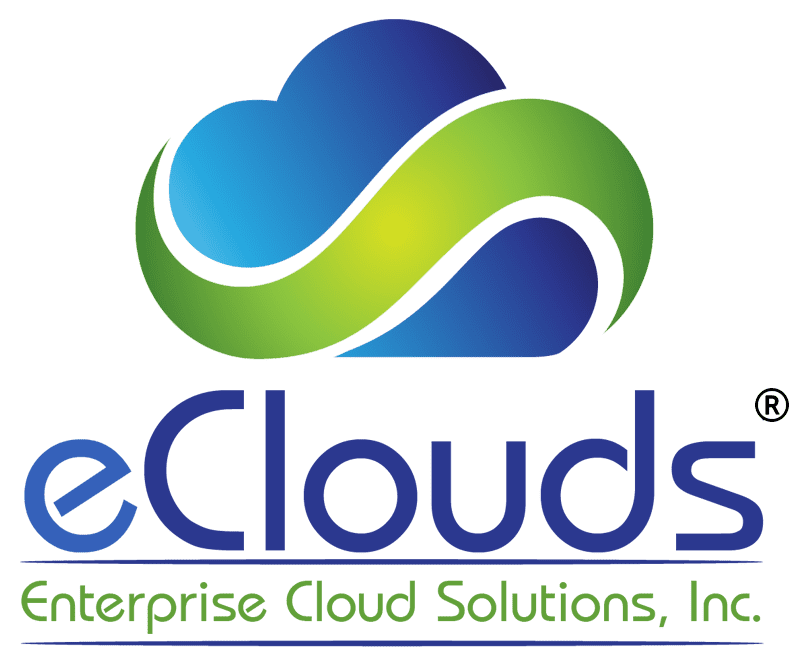7 Challenges in CPQ Implementations and Tips to Avoid Them
Common Challenges in CPQ Implementations
1. Lack of clear objectives and alignment with business goals
In a rush to implement new technologies, companies sometimes overlook defining and aligning clear objectives with business goals. Without a well-established target, CPQ implementation can lead to underutilization of the tool or even a complete misalignment with the company's needs. For instance, the software may end up automating processes that don't require it or fail to optimize crucial ones that do. Clear objectives can guide customization, integration, and user training, shaping the tool into one that genuinely addresses business needs.
2. Insufficient data and product information
A CPQ system's effectiveness is contingent on the quality of its data. If product information, pricing rules, or customer data are insufficient or outdated, the software will yield inaccurate configurations and quotes, leading to missed selling opportunities. Data inaccuracies can also undermine confidence in the system, leading to lower user adoption rates.
3. Complex product configurations and pricing rules
CPQ systems are designed to handle complexity, but the intricacies of certain products or pricing structures can still present significant challenges. Businesses with a vast array of products, options, bundles, or highly customized solutions may struggle to encode these variables into the CPQ system. Similarly, complex pricing rules that consider factors like volume discounts, geographic variations, or promotional offers can be difficult to automate accurately.
4. Integration issues with existing systems
CPQ doesn't function in isolation—it needs to integrate seamlessly with other business systems like CRM, ERP, or e-commerce platforms. Incompatibilities or integration errors can lead to data inconsistencies, functional overlaps, or process bottlenecks. It's crucial to ensure that the chosen CPQ solution can smoothly interface with existing systems, maintaining data integrity and process continuity.
5. User adoption and training difficulties
Introducing a CPQ system often significantly change how sales teams operate. Resistance to this change can be a major obstacle, particularly if the system's benefits are not immediately evident to the users. Training challenges can also arise, especially if the tool is complex or unintuitive. Adequate training and change management strategies are crucial to overcome this hurdle.
6. Limited scalability and flexibility
Business needs to evolve over time, and the CPQ solution must be able to scale and adapt accordingly. A system that cannot accommodate growth or flexibly adjust to new product lines, markets, or pricing strategies will quickly become a liability. It's essential to assess a CPQ tool's scalability and flexibility before implementation.
7. Change management and resistance to new processes
Implementing a CPQ system typically entails significant process changes. Even if these changes are ultimately beneficial, they can be met with resistance from staff accustomed to existing methods. Successful CPQ implementation requires a thoughtful change management strategy, including clear communication of the benefits, involvement of staff in the process, and provision of adequate support during the transition. By recognizing and planning for these challenges, companies can navigate CPQ implementation more effectively and reap the full benefits of this powerful sales tool.

Tips to Avoid CPQ Implementation Challenges
A. Define Clear Objectives and Align with Business Goals
A clear roadmap is vital for a successful CPQ implementation. It begins with defining clear objectives and ensuring they align with your business goals.
- Conduct a Thorough Needs Assessment and Identify Pain Points
Conducting a thorough needs assessment is crucial before selecting a CPQ solution or starting an implementation process. This involves understanding your current sales processes, identifying gaps and inefficiencies, and pinpointing the pain points your sales team is experiencing.
According to a 2021 report by Gartner, many businesses that skip this step often end up with a CPQ system that doesn't meet their requirements1. The needs assessment should include consultations with your sales team, product managers, and IT department to ensure a holistic understanding of the needs.
- Set Realistic Expectations and Prioritize Key Functionalities
Setting realistic expectations is a critical part of the planning process. CPQ systems offer a wide range of functionalities, and while it can be tempting to utilize them all, it is important to focus on those that meet your specific business needs.
Consider which functionalities will provide the most value to your sales process. Do you need complex product configuration capabilities, dynamic pricing, or advanced quoting features? Understanding what you need from the CPQ system will guide your implementation strategy and help set realistic expectations for what the system can achieve.
This approach also ensures that the implementation process remains focused, avoiding feature bloat and complexity that could derail the project or lead to a system that is too complex for your team to use effectively.
By carefully defining your objectives, aligning them with your business goals, assessing your needs, and setting realistic expectations, you can navigate the CPQ implementation process more effectively and maximize the benefits of your new system.
B. Ensure Data Readiness
Quality data is the lifeblood of any CPQ system. Thus, ensuring data readiness is crucial for successful CPQ implementation.
- Establish a Comprehensive Data Governance Strategy
Data governance refers to the overall management of an organization's data availability, usability, integrity, and security. A sound data governance strategy is essential for successful CPQ implementation, as it ensures that data is reliable, consistent, and secure.
Your data governance strategy should include policies and procedures for data collection, storage, access, and usage. It should also cover data quality control and compliance with data protection regulations. A well-defined data governance strategy helps maintain the health of your CPQ system and fosters trust in the system among users and customers.
- Cleanse and Enrich Product Data Before Implementation
Data cleansing is identifying and correcting (or removing) corrupt, inaccurate, or irrelevant parts of data sets. Before implementing a CPQ system, cleaning up and enriching your product data is crucial. This ensures the CPQ system can deliver accurate configurations, prices, and quotes.
- Implement Data Integration and Synchronization Processes
Data integration involves combining data from different sources to provide a unified view. This is important in CPQ implementation, as the CPQ system needs to integrate with other systems like CRM or ERP to access necessary data.
Synchronization ensures that changes made in one system are reflected in the other. For example, if a new product is added to the ERP system, it should automatically appear in the CPQ system. Data discrepancies can occur without proper synchronization, leading to errors in product configurations, pricing, or quoting.
C. Streamline Complex Configurations and Pricing
CPQ systems are designed to manage complex product configurations and pricing rules, but there are strategies to make this process even smoother.
- Simplify Product Configurations and Pricing Rules
While some complexity in product configurations and pricing is inevitable, particularly for certain industries, it can be beneficial to streamline these aspects as much as possible. This can involve consolidating similar products, eliminating unnecessary options, or simplifying pricing rules.
The goal is to reduce the cognitive load on the sales team using the CPQ system and the system itself. Simplified configurations and pricing rules can reduce errors, make the system more user-friendly, and speed up the quoting process. However, care should be taken to ensure that the simplification doesn't limit the flexibility or customizability that customers demand.
- Implement Guided Selling Techniques and Intelligent Workflows
Guided selling involves providing prompts or guidance to sales reps throughout the sales process. This can be particularly helpful in navigating complex product configurations or pricing rules. For instance, the CPQ system might recommend certain options based on the customer's needs or highlight cross-selling or upselling opportunities.
Intelligent workflows can automate certain steps in the sales process, such as selecting the appropriate discounts based on the order size or approving quotes that meet certain criteria. This not only speeds up the sales process but also reduces the chance of errors or inconsistencies.

D. Seamless Integration with Existing Systems
To avoid data discrepancies and ensure process continuity, your CPQ solution must integrate seamlessly with your existing systems.
- Assess Integration Requirements and Potential Challenges
Before you start the implementation process, assess your integration requirements. Determine which systems (CRM, ERP, etc.) need to be integrated with the CPQ tool and what kind of data needs to be shared. Be aware of potential integration challenges, such as incompatible software or the need for custom integration.
- Choose a CPQ Solution That Offers Robust Integration Capabilities
When selecting a CPQ solution, ensure that it has robust integration capabilities. It should be able to integrate seamlessly with your existing systems, preserving data integrity and ensuring smooth data flow.
- Collaborate with IT Teams to Ensure Smooth Integration
Your IT team plays a critical role in the integration process. Collaborate with them from the start to ensure that the integration goes smoothly, and any technical issues are quickly resolved.
E. Focus on User Adoption and Training
User adoption is a critical factor for the success of your CPQ implementation.
- Develop a Comprehensive Training Plan for All User Levels
A comprehensive training plan is crucial to ensure that all users understand how to use the new system effectively. The training should cover all user levels and be tailored to the needs of different roles.
- Provide Ongoing Support and Resources
Ongoing support and resources help users to continue learning and solving problems after the initial training. This might include user manuals, tutorials, or a dedicated helpdesk.
- Foster a Culture of Continuous Learning and Improvement
Encourage a continuous learning and improvement culture, where feedback is welcomed, and improvements are made continuously.
F. Ensure Scalability and Flexibility
As your business grows and evolves, so too will your CPQ needs.
- Consider Long-Term Scalability Requirements
When choosing a CPQ solution, consider your long-term scalability requirements. The system should be able to handle increased data volumes, more complex configurations, and larger user groups as your business grows.
- Choose a CPQ Solution That Can Grow with the Business
Your CPQ solution should not only meet your current needs but also be able to grow with your business. This means it should be flexible enough to adapt to new product lines, markets, or pricing strategies.
- Regularly Assess and Optimize the CPQ Implementation for Evolving Needs
As your business evolves, regularly assess and optimize your CPQ implementation to ensure it continues to meet your needs.

G. Effective Change Management
Change management is crucial to ensure the transition to the new system goes smoothly.
- Communicate the Benefits of CPQ to All Stakeholders
Communication is key in any change management process. Make sure all stakeholders understand the benefits of the new system and how it will affect their work.
- Involve Key Stakeholders in the Decision-Making Process
Involve key stakeholders in the decision-making process. This not only ensures that their needs are considered but also increases their ownership and commitment to the change.
- Monitor Progress, Address Concerns, and Provide Regular Updates
Throughout the implementation process, monitor progress, address any concerns promptly, and provide regular updates to keep everyone informed. This will help to build confidence in the new system and facilitate its acceptance.
Conclusion
Implementing a Configure, Price, Quote (CPQ) solution brings significant benefits, such as streamlining sales processes and enhancing customer satisfaction. However, it also poses challenges like unclear objectives, data readiness, complex configurations and pricing, integration issues, user adoption difficulties, scalability concerns, and resistance to change. Proactive planning and strategic execution are key to mitigating these challenges, aligning the CPQ with business goals, simplifying configurations, ensuring seamless integration, providing user training, planning for scalability, and managing change effectively.
A well-implemented CPQ solution significantly enhances sales operations, boosts revenues, and improves customer relationships. Despite the complexity of the implementation journey, investing in proactive strategies to overcome potential challenges transforms your business's success. The right approach and careful planning make the CPQ implementation process manageable and a game-changing factor for your business.
Key Takeaways
- Clear Objectives and Business Alignment: Companies must define objectives and align the CPQ implementation with business goals. Underutilization or misalignment may occur without a well-established target, leading to ineffective outcomes.
- Data Readiness: The effectiveness of a CPQ system heavily relies on accurate and updated data. Insufficient or outdated data can lead to incorrect configurations and quotes, undermining user trust and adoption.
- Complex Configurations and Pricing: Although CPQ systems handle complexity, intricacies in product and pricing structures can pose challenges. Companies need to encode these variables into the system for accurate automation effectively.
- System Integration: Successful CPQ implementation requires seamless integration with other business systems like CRM, ERP, and e-commerce platforms. Incompatibilities or errors can result in data inconsistencies and process bottlenecks.
- User Adoption and Training: Change can cause resistance, especially affecting daily operations. Implementing effective training and change management strategies is essential to ensure user adoption and proficiency with the new system.
- Scalability and Flexibility: A CPQ solution must adapt as business needs evolve. Limited scalability and flexibility can turn the system into a liability, emphasizing the need for careful assessment before implementation.
- Change Management: Significant process changes are inevitable with CPQ implementation. Companies must have a robust change management strategy, communicate benefits, involve staff, and provide adequate support during the transition.
By anticipating and planning for these challenges, businesses can navigate CPQ implementation more successfully and harness its full potential.
How eClouds Experts Can Help?
Salesforce CPQ isn't just software—it's a strategic tool that can enhance your business's operations, increase your accuracy, boost your profits, and create happier customers.
Choosing Salesforce CPQ can bring significant benefits to your business. However, its setup and proper utilization can be quite challenging. That's where the importance of an expert partner comes in.
At eClouds.co, we boast over 16 years of experience in dealing with Salesforce. Our team of certified experts has consistently demonstrated success. We've garnered numerous positive reviews from satisfied customers who appreciate our dedication and high-quality service.

Citation Reference
Critical Capabilities for Configure, Price and Quote Application Suites. Retrieved from Gardner ( 9 November 2022).
Guidelines for Setting Up Salesforce CPQ. Retrieved from Salesforce (n.d).
Manage Your Quotes with CPQ. Retrieved from Salesforce (n.d).
Product Rules in Salesforce CPQ. Retrieved from Trailhead (n.d).
Printable Tip Sheets & User Guides — For Salesforce CPQ. Retrieved from Salesforce (n.d).
Required Indexes for Industries CPQ Implementations. Retrieved from Salesforce (n.d).
Popular Post

A Complete Guide to Understanding Salesforce Sales Cloud

5 Things You Should Consider in Choosing Your Salesforce Implementation Partner

11 Key Benefits of CPQ Every Business Needs to Know

10 Most Common CRM Implementation Challenges that You Must Be Aware Of






